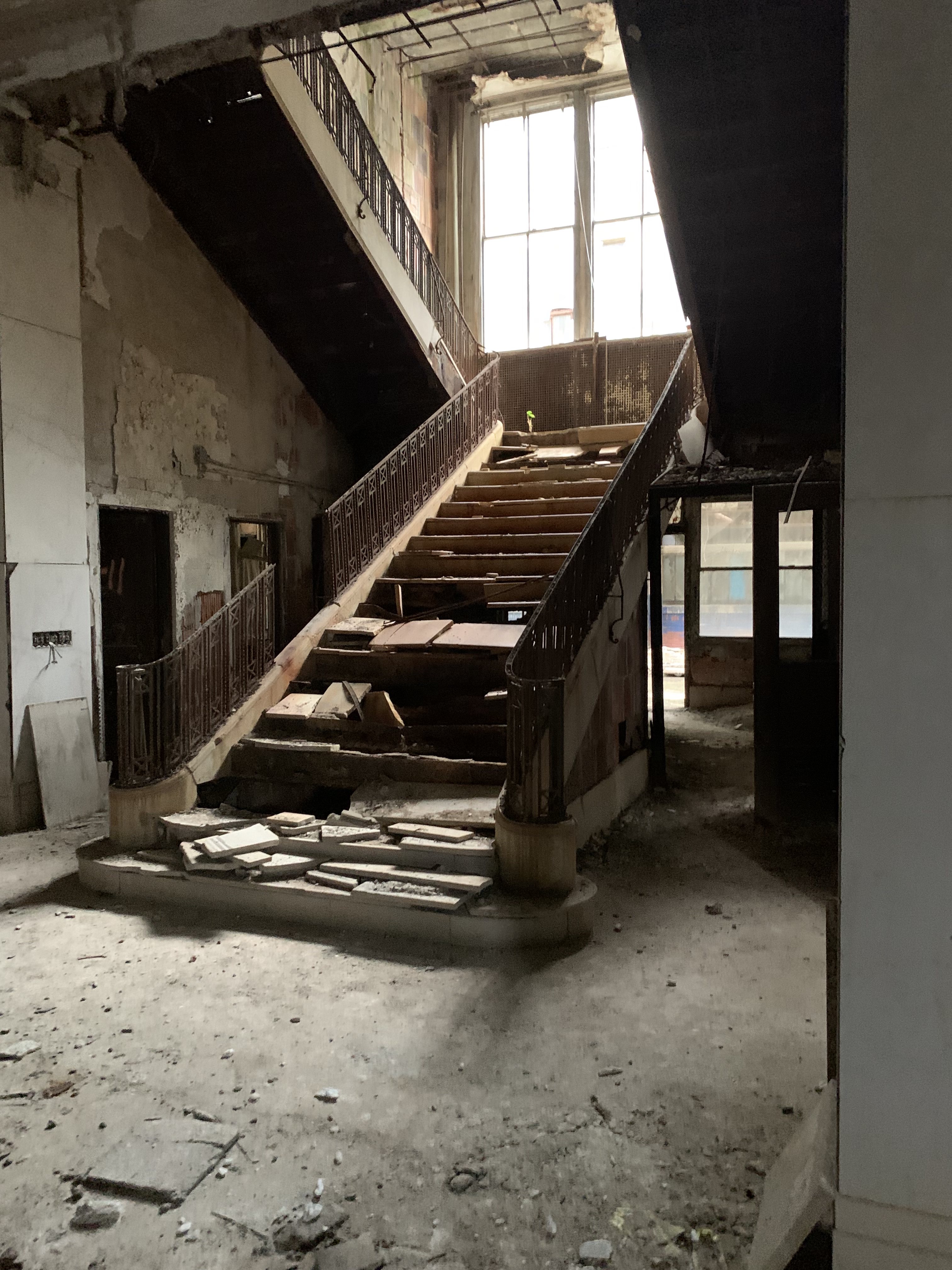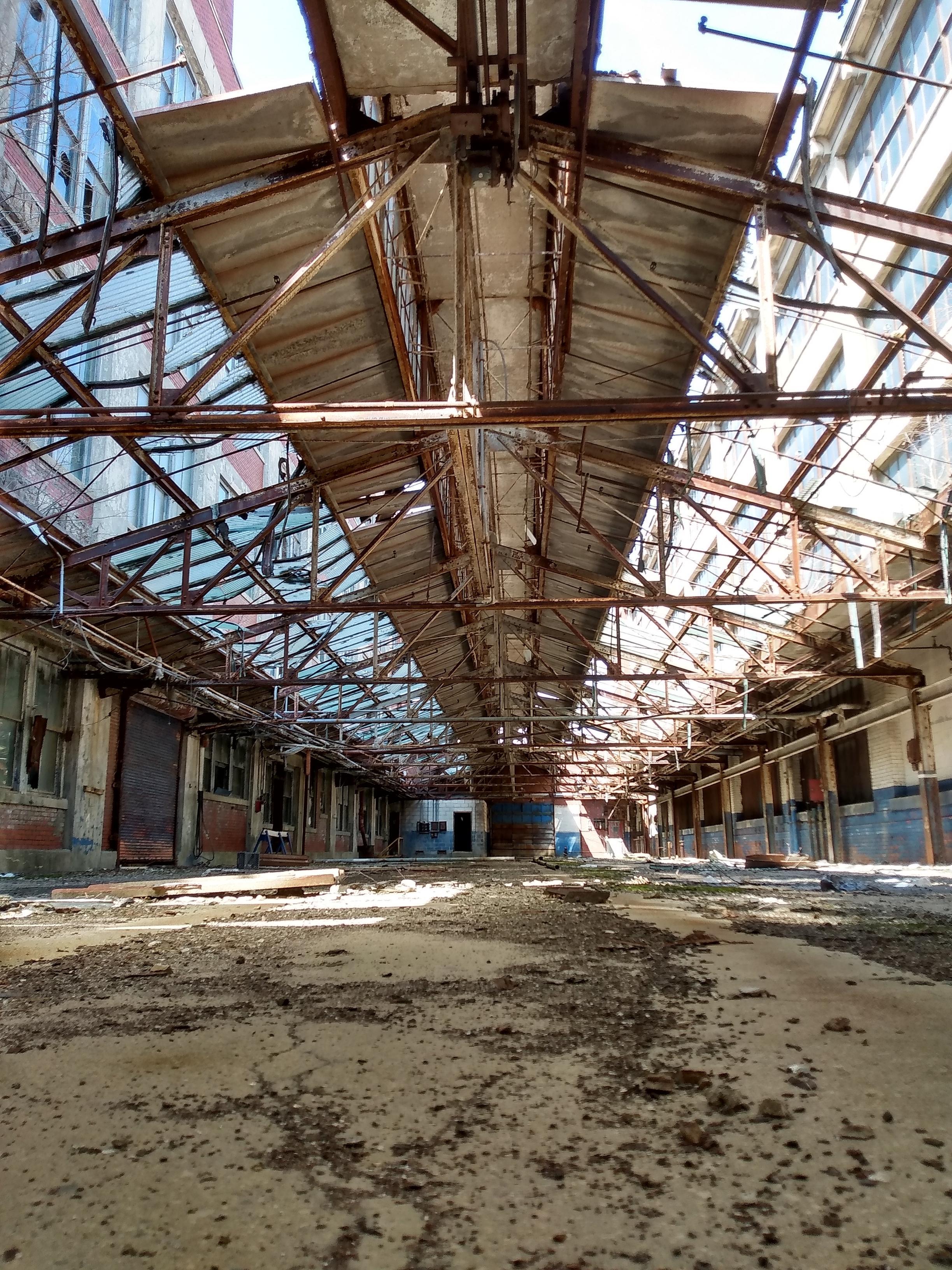Uncertain Future of the Historic Ford Highland Park Plant
Iconic FORD letters between the smokestacks of the Ford Highland Park Plant photo courtesy Walter P. Reuther Library Wayne State University
If you drive to 15000 Woodward Avenue in Highland Park, Michigan, you might notice a boarded up four-story building with a green historical marker in front of it. The building was once the headquarters for Ford Motor Company’s Highland Park Plant. The Highland Park Plant helped make Detroit the automotive capital of the world. Now, the future of the Ford Highland Park Plant building is uncertain.
In recent years, what was left of the Ford Highland Park Plant has been used for storage by Ford Motor Company and Dearborn’s Greenfield Village. The non-profit Woodward Avenue Action Association (WA3) purchased buildings at the plant in 2013 in order to preserve the historic site. WA3 planned to transform the abandoned plant into what it described as an “Automobile Heritage Welcome Center,” with attractions such as a theater, test track, and the Motorsports Hall of Fame of America. WA3 also planned to have the Ford Highland Park Plant recognized as a “world heritage destination,” a distinction it would share with landmarks like the Great Barrier Reef and the Statue of Liberty. The renovations were projected to be completed by 2018. Attempts to renovate the buildings were abandoned, and in 2019, the WA3 put the Ford Highland Park Plant buildings that it owned up for sale. According to DBusiness Magazine, the buildings are being sold by Plante Moran REIA. No list price has been posted.
On New Year’s Day 1910, Ford’s Highland Park Plant opened its doors at the corner of Woodward and Manchester in Highland Park, Michigan. The plant was designed by architect Albert Kahn, who the Detroit Historical Society refers to as “Detroit’s best-known architect.” Kahn is the architect behind several other Detroit landmarks like the Packard Plant, the Ford River Rouge Plant, the Fisher Building, and Belle Isle’s Anna Scripps Whitcomb Conservatory.
Locals knew the Ford Highland Park Plant as the “Crystal Palace,” described as a building with a “glass roof and walls of windows” by the Detroit Historical Society. The plant was also known for its eye-catching set of smokestacks with the word “Ford” spelled between them. At the time of its opening, the automobile plant was the largest in the world.
The plant would come to be known as the birthplace of the moving assembly line when the concept was introduced at the plant in 1913. The revolutionary Model T car was produced at the Highland Park Plant until 1927 when production shifted to manufacturing automotive trim, trucks, and tractors. The plant was also utilized to manufacture tanks and aircraft engine parts during the Second World War. Throughout the following decades, buildings at the plant were leased out and iconic structures such as the smokestacks and the Crystal Palace were demolished. By 1974, all production had ceased at the plant. The location was deemed a National Historic Landmark in 1978.



